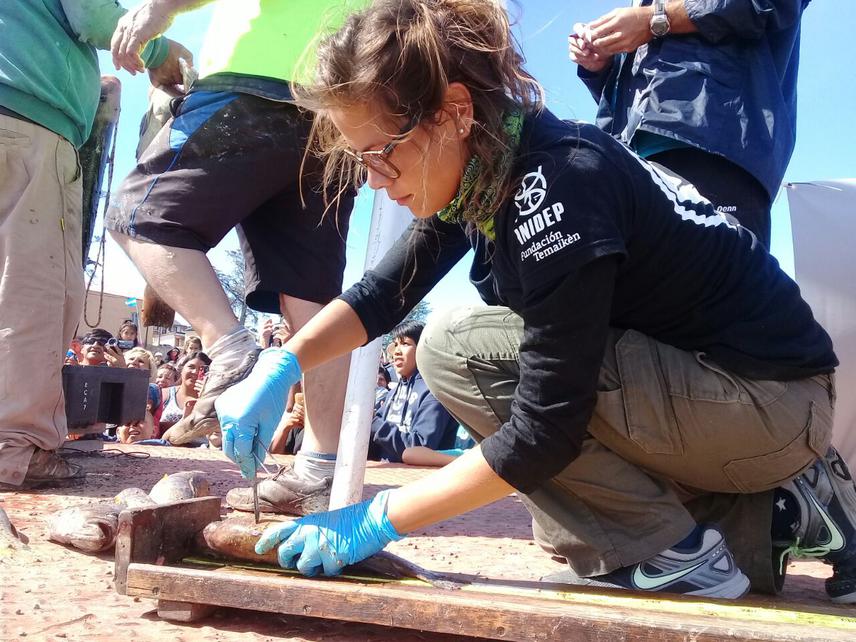Manuela Funes
Temperate reefs fishes are long living animals, with low energy budget and high site fidelity. They present complex reproduction strategies with low reproduction potential. This and other features of their life strategies make them particularly vulnerable to local impacts.
Trawl fisheries are massive impacting activities; removing target animals, discarding bycatch and scrapping the bottom. In another hand, artisanal fisheries present high selectivity, which maintained over time, could also represent an important impact by changing the community structure. Both fisheries can modify the trophodynamic of reef fishes by changing prey availability or removing bigger fish. Here we propose to evaluate fishing impacts on reef fishes’ trophodinamics at Northern Patagonia.

Temperate reef-fishes are important species for north Patagonian coastal communities, being one of the main attractions for recreational divers and fishers, and supporting commercial small scale fisheries.
Due to their high site fidelity, low energy budget and complex reproduction strategies, they are also very vulnerable to local impacts.
Fisheries are one of the main atrophic impacts to marine ecosystems. Trawl fisheries remove massive amounts of biomass, scrape and modify the seabed and, at the long term, were reported to alter ecosystem structure and intraspecific interactions. In another hand, artisanal fisheries are direct and high selective arts, which maintained over time could also modify an ecosystem, for example, its size structure.
At north coast of San Jorge Gulf, a coastal-marine park was recently created, where several human activities take place, like tourism, artisanal and recreational fisheries, and industrial trawl fisheries. In most of this activities, temperate reef fishes are targets or a common by-catch item.
Little is known about this reef fishes’ conservations status and no studies have focus in how long term changes on the ecosystem affect them.
We study how diet features of three species of reef fishes; Argentine sandperch (Pseudopercis semifasciata), Patagonian rockfish (Sebastes oculatus) and Argentine sea bass (Acanthistius patachonicus), vary between adjacent systems with different levels of impact: impacted by trawl fishery, impacted by artisanal fishery and no fished.
Diet features, assessed using stable isotope analysis, will be: trophic level, the sizes and overlaps of isotopic niche and the reliance on benthic affinity prey (RBAP) to assess the possible usage of discards as an energy resource. Body condition will be also compared.
Accounting with the scientific background of the feeding behaviour of each species, differences on their diet features between sites will be interpreted as difference on the availability of prey. Then, altered trophic features will be read as an altered ecosystem. Results of this an others ongoing investigations will be used as an input to build the management plan of the park. Also, results will be communicated to the local society in several divulgatory events focused in different publics, i. e. schools, fishers, government.